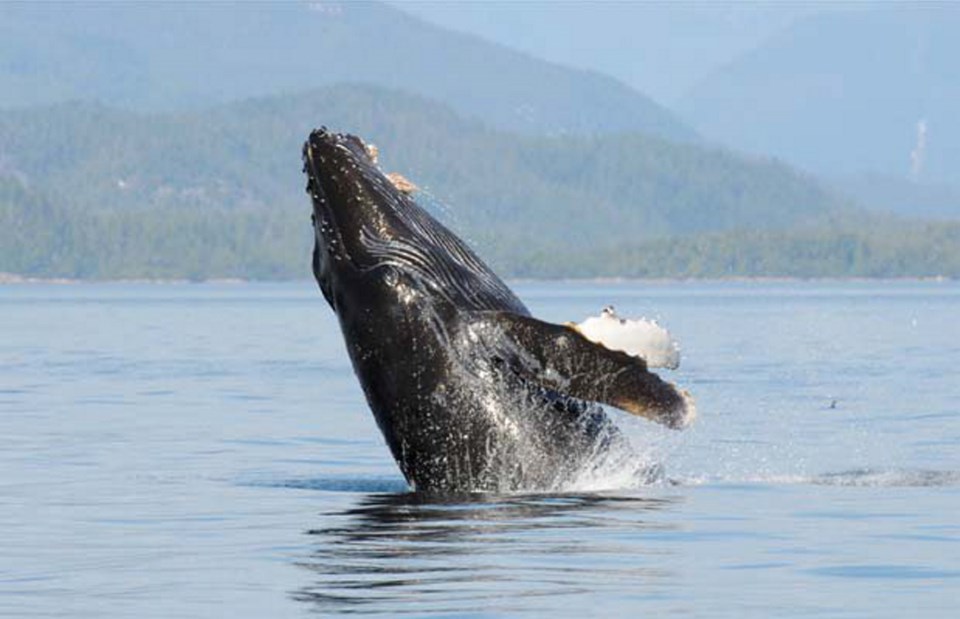A population of humpback whales off northern Vancouver Island is taking advantage of diving seabirds to exploit herring stocks, new research shows.
Christie McMillan, a fisheries science master’s student at Simon Fraser University, says that seabirds such as rhinoceros auklets and common murres dive into the ocean and swim beneath the herring so the prey forms tight schools known as “bait balls”.
“It’s a response of all herring,” she said in an interview at a weekend marine mammal symposium at the University of B.C. “When they’re startled, their response is to group up tight. It’s instinctual: ‘There’s a predator, get close to my neighbour, and hopefully he gets eaten instead of me.’”
The strategy works better on a one-kilogram bird than a 25-tonne whale.
“A bird eats one herring at a time, but whales just gobble them all,” said McMillan, who is also president of the Marine Education and Research Society.
Humpbacks in Queen Charlotte Strait have learned to let the seabirds do the initial work before lunging in and swallowing the bait balls, with individual whales consuming hundreds of kilograms per day. Gulls also benefit as the bait ball rises to the surface.
McMillan said she observed the practice during two years of field research.
“I’d look at a school of herring in the distance and think,’ OK, I’ll go sample that,’ and often the humpback would beat me to it. They’d go over and engulf it. They seem to be really benefiting from the birds in that area.”
McMillan estimates up to two dozen humpbacks a day use Queen Charlotte Strait from August to November. During that time, juvenile herring represent about 84 per cent of the annual nutritional requirements of an adult male humpback and 65 per cent of a pregnant female.
“It’s pretty important they meet their energy requirements because it will lead to successful reproduction,” she noted.
The findings may have management implications for humpbacks, which are officially listed as threatened by the Canadian government, although it’s unclear whether these particular whales have alternative prey sources in the area if herring numbers decline.
McMillan said more than 2,000 humpback whales are thought to feed in the rich waters of B.C. before winter migrations to Hawaii or Mexico, where they give birth.
The next step in the research is to compare the feeding habits of this population of humpbacks with other humpbacks on the B.C. coast to determine whether they, too, specialize on herring or other species.



